பெஞ்சமின் பிராங்கிளின்
பெஞ்சமின் பிராங்கிளின் (Benjamin Franklin; (ஜனவரி 17, 1706 – ஏப்ரல் 17, 1790) என்பவர் ஐக்கிய அமெரிக்காவை உருவாக்கியவர்களுள் ஒரு மூத்த தலைவர் ஆவார். இவர் ஓர் அரசியல் தலைவர் மட்டுமல்ல, ஒரு எழுத்தாளர், அறிவியலாளர், கண்டுபிடிப்பாளர் ஆவார். மின்னியலில் இவரின் கண்டுபிடிப்புகளுக்கும், கருத்துக்களுக்குமாக இவர் இயற்பியல் சரித்திரத்தில் ஒரு முக்கிமான அறிவியலாளராகக் கருதப்படுகிறார். அமெரிக்க ஆங்கில எழுத்திலக்கணத்திலும் சீர்திருத்த முறைமை அவசியத்தை வலியுறுத்தியவர். வணிகம், அறிவியல், இலக்கியம், அரசியல் ஆகிய நான்கு துறைகளில் பெரும் வெற்றி பெற்றவர்; இளம் வயதில் கையில் ஒரு காசுகூட இல்லாமல் ஏழ்மையில் இருந்தும் அச்சுத்தொழிலின் மூலமும், பத்திரிக்கையின் மூலமும் நாற்பது வயதுக்குள் செல்வந்தரானவர்.
| பெஞ்சமின் பிராங்கிளின் Benjamin Franklin | |
|---|---|
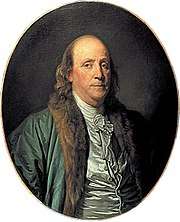 | |
| தனிநபர் தகவல் | |
| பிறப்பு | சனவரி 17, 1706 பொஸ்டன், மசாசுசெட்ஸ் |
| இறப்பு | ஏப்ரல் 17, 1790 (அகவை 84) பிலடெல்பியா, பென்சில்வேனியா |
| தேசியம் | |
| அரசியல் கட்சி | எதுவுமில்லை |
| வாழ்க்கை துணைவர்(கள்) | டெபோரா றீட் |
| தொழில் | அறிவியலாளர் எழுத்தாளர் அரசியல்வாதி |
| கையொப்பம் |  |
'Poor Richard's Almanack' என்ற புகழ்பெற்ற இதழை உலகுக்குத் தந்தவர். உலகின் மிகப்பிரபலமான தன்வரலாற்று நூல்களுள் ஒன்று அவருடையது. மின்சாரம் பற்றியும் இடி மின்னல் பற்றியும் புகழ்பெற்ற ஆராய்ச்சிகளை செய்து இடி தாங்கியையும், வெள்ளெழுத்தக் கண்ணாடியையும்(bifocal glasses) மற்ற பல கருவிகளையும் கண்டுபிடித்தவர்.[1] அரசியலில் சட்டமன்ற உறுப்பினராக, அரசதந்திரியாக, பிரான்சுக்கான தூதராக விளங்கியவர். அமெரிக்க சுதந்திர பிரகடணத்தை தயார் செய்து கையெழுத்திட்ட மூவரில் ஒருவர்.[2]
இளமை
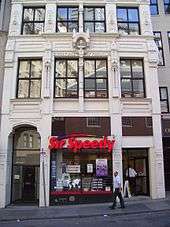
1706 ஆம் ஆண்டு ஜனவரி 17-ஆம் நாள் அமெரிக்காவின் பாஸ்டன் நகரில் பிறந்தார் பிராங்கிளின்.[3]}} மொத்தம் 17 பிள்ளைகளில் பத்தாவதாக பிறந்தவர் அவர். அவரது தந்தையார் சோப்பு, மெழுகுவர்த்திகளைத் தாயரித்து விற்பனை செய்வார். பெரிய குடும்பம் என்பதால் குடும்ப ஏழ்மையின் காரணமாக பிராங்கிளினை பள்ளிக்கு அனுப்ப இயலவில்லை. ஓராண்டுக்கும் குறைவாகவே பள்ளி சென்ற பிராங்க்ளின் தனது ஏழாவது வயதிலேயே கவிதைகள் எழுதத் தொடங்கினார். "[4] பள்ளிக்கு செல்லாவிட்டாலும் தன் தந்தையின் தொழிலில் உதவி செய்துகொண்டே தனக்குக் கிடைத்த நேரத்தில் அவர் நான்கு மொழிகளைக் கற்றுக்கொண்டார்
எழுத்தும் அச்சுத்தொழிலும்
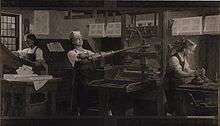
பிராங்கிளினுக்கு இயற்கையிலேயே நூல்கள் வாசிப்பதில் ஈடுபாடு இருந்தது. அந்த அவருடைய பண்புதான் பிற்காலத்தில் அமெரிக்காவின் சுதந்திர பிரகடனத்தை எழுதும் வீரியத்தை அவருக்கு தந்தது. வாசிப்பதில் இருந்த ஆர்வம் காரணமாகவே அவர் தனது சகோதரர் ஜேம்ஸின் அச்சுக்கூடத்தில் வேலைக்குச் சேர்ந்தார். அங்கு அச்சுப் பணிகளைக் கற்றுக்கொண்டதோடு அச்சுக்கு வரும் அத்தனை புத்தகங்களையும் படித்துத் தீர்த்து ஆனந்தம் அடைவார். நிறைய வாசித்ததால் எழுதும் திறமையும் அவருக்கு இருந்தது.[5] பிறகு தனது சகோதரருடன் ஏற்பட்ட மனத்தாங்கல் காரணமாக அவர் வீட்டை விட்டு வெளியேறி பிலடெல்பியா சென்றார். அங்கும் அச்சுத்தொழிலில் ஈடுபட்டு சொந்தமாக அச்சு நிறுவனத்தைத் தொடங்கினார். அமெரிக்க இதழ்களில் நிறைய எழுதினார். அவரது புகழ் நாடு முழுவதும் பரவத் தொடங்கியது.[6]
இதழியலாளர்
1720 ஆம் ஆண்டு 'பென்சில்வேனியா கெசட்' {Pennsylvania Gazette} என்ற இதழை விலைக்கு வாங்கி அதன் பொறுப்பை ஏற்றுக்கொண்டார் பிராங்கிளின். நான்கு ஆண்டுகள் கழித்து 'புவர் ரிச்சர்ட்ஸ் அல்மனாக்'(Poor Richard's Almanack) என்ற இதழைத் தொடங்கினார்.[5] மிகவும் மாறுபட்ட பாணியில் வெளிவந்த அந்த இதழ்தான் அவருக்கு செல்வத்தையும், பெரும் புகழையும் கொண்டு வந்து சேர்த்தது.[7]
கண்டுபிடிப்பாளர்
அறிவியல்
அச்சுத்துறையில் புதுமைகள் செய்த அதே வேளையில் புதிதாக எதையாவது கண்டுபிடிக்க வேண்டும் என்ற ஆர்வமும் அவரிடம் இருந்தது. குறைவான எரி சாதனத்துடன் மிகுந்த வெப்பம் தரக்கூடிய அடுப்பை அவர் கண்டுபிடித்தார். அவற்றைத் தயாரித்து விற்கவும் தொடங்கினார். பயிர்களுக்கு செயற்கை உரமிட்டால் அவை செழிப்பாக வளரும் என்று எடுத்துக் கூறினார். ஆரம்பத்தில் புறக்கனிக்கப்பட்டாலும் அதிலிருந்த உண்மையை உலகம் மெதுவாக புரிந்து கொண்டது. இப்போதுகூட உலகம் முழுவதும் செயற்கை உரம் பயன்படுத்தப்படுகிறது.
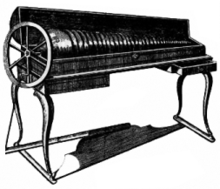
மின்சாரத்தின் மீது ஆய்வுகள் செய்தவர் மின்னலில் கூட மின்சக்தி இருக்கிறது என்பதை கண்டறிந்தார்.[8][9] கூரிய முனைகளால் மின்சாரம் ஈர்க்கப்படுகிறது அதேபோல் மின்னலும் கூரிய முனைகளால் ஈர்க்கப்படும் என்பதை பட்டம் ஆய்வின் மூலம் நிரூபித்தார்.[10][11] மின்னல் இடியிலிருந்து கட்டிடங்களைப் பாதுகாக்க இடிதாங்கியைக் கண்டுபிடித்தார்.[12] முதியர்வர்கள் எட்டப் பார்வைக்கும், கிட்டப் பார்வைக்கும் சேர்த்து அனியும் ஒரே கண்ணாடியான வெள்ளெழுத்துக் கண்ணாடி (bifocal lens) பிராங்கினின் கண்டுபிடிப்பாகும்.[1] தன் கண்டுபிடிப்புக்கெல்லாம் அவர் காப்புரிமை பெற்றதில்லை.[13] மற்றவர்களின் கண்டுபிடிப்புகளால் நாம் பயன்பெறும்போது நமது கண்டுபிடிப்பால் பிறர் பயன்பெறுவதை நாம் நற்பேறாகக் கருத வேண்டும் என்பதே அவரது எண்ணம்."[14]
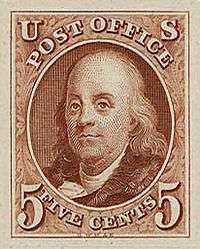
பிற துறைகள்
அறிவியல் துறையில் பெரிய பங்களிப்பைச் செய்த அவர் காகிதப் பணத்தின் இன்றியமையாமையை எடுத்துக்கூறி அதன் புழக்கத்தை அதிகரிக்கச் செய்தார்.[15][16] சந்தா முறையில் (subscription) நூல்களை வாங்கி படிக்கும் முறையை உலகுக்கு அறிமுகம் செய்தார்.[17] பிலடெல்பியாவின் தபால் துறையின் பல மாற்றங்களை செய்து தற்கால தபால் துறை பின்பற்றும் பல கொள்கைகளை உருவாக்கித் தந்தார்.[18][19]
1730-ஆம் ஆண்டு நடமாடும் நூல் நிலையம் என்ற அற்புத திட்டத்தை உலகுக்கு அறிமுகம் செய்தார்.[20][21] அதனைத் தொடர்ந்து அமெரிக்காவின் முதல் தீ காப்பீட்டு நிறுவனத்தை அவர் உருவாக்கினார். ஒரு கல்விக் கழகத்தை நிறுவ வேண்டும் என்று அவர் கனவு கண்டார். அவரது காலகட்டத்திலேயே அந்தக் கனவு நனவானது.[22][23] இன்று உலகப் புகழ்பெற்ற அமெரிக்கப் பல்கலைக்கழகங்களுள் ஒன்றான பென்சில்வேனியா பல்கலைக்கழகம் அவர் நிறுவியதுதான். 1749-ஆம் ஆண்டு அது நிறுவப்பட்டது. அடுத்த இரண்டு ஆண்டுகள் கழித்து அமெரிக்காவின் முதல் மருத்துவமனையைத் தோற்றுவித்தார் பிராங்கிளின்.
அரசியல்
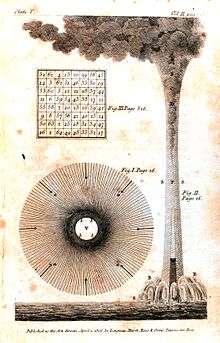
பிராங்கிளின் சிறந்த சிந்தனையாளர், நேர்மையானவர் என்பதால் அவரை பயன்படுத்திக்கொள்ள விரும்பியது அரசு."[24] அவரும் சட்டமன்ற உறுப்பினர், அரசதந்திரி, தூதர் என பல்வேறு நிலைகளில் அரசியல் பணி புரிந்தார்.[25] இங்கிலாந்தின் காலனித்துவ ஆட்சியில் அடிமைப்பட்டு கிடந்த அமெரிக்காவுக்கு சுதந்திரம் பெற்றுத்தர அவர் தன் அரசியலறிவைப் பயன்படுத்தி பிரான்சின் உதவியைப் பெற்றார்.[26] அவர்மேல் பெரும் மதிப்புக் கொண்டிருந்த பிரான்சும் அமெரிக்காவுக்கு உதவ முன்வரவே இங்கிலாந்து பணிந்தது; அமெரிக்காவுக்கு சுதந்திரம் கிடைத்தது. 1789 ஆம் ஆண்டு அமெரிக்காவின் முதல் அதிபராக தேர்ந்தெடுக்கப்பட்ட ஜார்ஜ் வாஷிங்டன் அமெரிக்காவின் அரசியல் சட்டத்தை இயற்றும் மாபெரும் பொறுப்பை பெஞ்சமின் பிராங்கிளினை உள்ளடக்கிய ஒரு குழுவிடம் ஒப்படைத்தார். அவரது மேற்பார்வையில் உருவான அரசியல் சட்டம்தான் இன்றும் அமெரிக்காவை வழிநடத்துகிறது.[27]
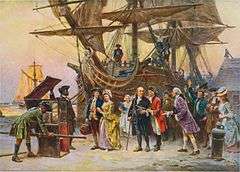
சிறப்பு
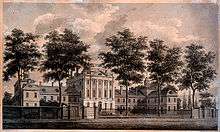
சுதந்திரம் அடைந்த பிறகு அமெரிக்கா முதன் முதலாக இரண்டு அஞ்சல் தலையை வெளியிட்டது. ஒன்றில் அமெரிக்காவின் முதல் அதிபரான ஜார்ஜ் வாஷிங்டனின் படம். மற்றொன்றில் பெஞ்சமின் பிராங்கிளினின் படம் இடம்பெற்றிருந்தது.
மறைவு
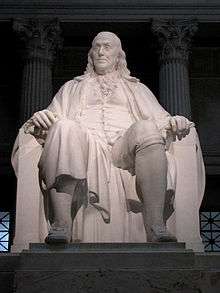

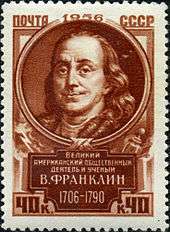
பிராங்கிளின் 1790 ஆம் ஆண்டு ஏப்ரல் 17-ஆம் தேதி தனது 84 ஆவது வயதில் காலமானார். அரசாங்க மரியாதையுடன் அவரது உடல் அடக்கம் செய்யப்பட்டது. சுமார் இருபதாயிரம் பேர் அவருக்கு இறுதி மரியாதை செலுத்தினர்.[28][29]
பொன்மொழி
பெஞ்சமின் பிராங்கிளின் உதிர்த்த பல பொன்மொழிகளை இன்றும் பல பேச்சாளர்கள் அடிக்கடி பயன்படுத்துகின்றனர்.
| “ | "இறந்த பிறகும் நீங்கள் மறக்கப்படாமல் இருக்க வேண்டுமென்றால்; ஒன்று சிறந்த படைப்புகளை எழுதுங்கள் அல்லது பிறர் உங்களைப் பற்றி எழுதும் அளவுக்கு ஓர் அர்த்தமுள்ள வாழ்க்கை வாழுங்கள்" | ” |
மேலும் காண்க
- U.S. Constitution, floor leader in Convention.
- Thomas Birch's newly discovered Franklin letters
- William Goddard (apprentice/partner of Franklin)
- Benjamin Franklin on postage stamps
- Observations Concerning the Increase of Mankind, Peopling of Countries, etc., by Franklin
மேற்கோள்கள்
- "Inventor". The Franklin Institute. பார்த்த நாள் 25 April 2012.
- மாணவன் இணையதளம்
- Engber, Daniel (2006). What's Benjamin Franklin's Birthday?. Retrieved June 17, 2009.
-
- Van Doren, Carl. Benjamin Franklin. (1938). Penguin reprint 1991.
- H.W. Brands. The First American: The Life and Times of Benjamin Franklin. Random House Digital; 2010. p. 390.
- "William Goddard and the Constitutional Post". Smithsonian National Postal Museum. பார்த்த நாள் 27 May 2012.
- Benjamin Franklin (1706–1790). Science World, from Eric Weisstein's World of Scientific Biography.
- Conservation of Charge.
- Steven Johnson (2008) in The Invention of Air, p.39 notes that Franklin published a description of the kite experiment in The Pennsylvania Gazette without claiming he had performed the experiment himself, a fact he shared with Priestley 15 years later.
- Franklin's Kite. Museum of Science, Boston.
- Krider, E. Philip. Benjamin Franklin and Lightning Rods. Physics Today. January 2006.
- Franklin, Benjamin. "The Pennsylvania Gazette". FranklinPapers.org, October 23, 1729
- Benjamin Franklin. "Part three". The Autobiography of Benjamin Franklin. http://www.ushistory.org/franklin/autobiography/page55.htm.
- John Kenneth Galbraith. (1975). Money: Where It Came, Whence It Went pp. 54–54. Houghton Mifflin Company.
- "The Writings of Benjamin Franklin, Volume III: London, 1757 - 1775 - On the Price of Corn, and Management of the Poor". Historycarper.com. பார்த்த நாள் 2011-12-11.
- "A Quick Biography of Benjamin Franklin". USHistory.org. பார்த்த நாள் 25 April 2012.
- Walter Isaacson. Benjamin Franklin: an American life pp. 206–9, 301
- calmx (June 16, 2010). "The New York Times Company/About.com". Inventors.about.com. பார்த்த நாள் June 20, 2011.
- Van Horne, John C. "The History and Collections of the Library Company of Philadelphia," The Magazine Antiques, v. 170. no. 2: 58–65 (1971).
- Lemay, J. A. Leo. "Franklin, Benjamin (1706–1790)," Oxford Dictionary of National Biography. ed. H. C. G. Matthew and Brian Harrison (Oxford: OUP, 2004).
- "Excerpt from Philadelphia Inquirer article by Clark De Leon". Mathsci.appstate.edu (February 7, 1993). பார்த்த நாள் September 21, 2009.
- "History of the Benjamin Franklin Institute of Technology". Bfit.edu. மூல முகவரியிலிருந்து July 31, 2008 அன்று பரணிடப்பட்டது. பார்த்த நாள் September 21, 2009.
- Isaacson 2003, p. 491, 492
- Such was the number of portraits, busts and medallions of him in circulation before he left Paris that he would have been recognized from them by any adult citizen in any part of the civilized world. Many of these portraits bore inscriptions, the most famous of which was Turgot's line, "Eripuit fulmen coelo sceptrumque tyrannis." (He snatched the lightning from the skies and the scepter from the tyrants.) —

- H.W. Brands, The First American: The Life and Times of Benjamin Franklin (2000)
- Citizen Ben, Abolitionist. PBS.org.
- திரு.அழகிய பாண்டியன், ஒலி 96.8 வானொலி சிங்கப்பூர்
- Benjamin Franklin: In His Own Words. Library of Congress.
உசாத்துணை
- Becker, Carl Lotus. "Benjamin Franklin," Dictionary of American Biography (1931) – vol 3, with hot links online
- Brands, H.A.. The First American: The Life and Times of Benjamin Franklin (2000)- excellent long scholarly biography excerpt and text search
- Walter Isaacson (2003). Benjamin Franklin: An American Life. New York: Simon & Schuster. பன்னாட்டுத் தரப்புத்தக எண்:978-0-7432-6084-8. http://books.google.com/?id=oIW915dDMBwC&printsec=frontcover&dq=Benjamin+Franklin:+An+American+Life#v=onepage&q&f=false., well written popular biography
- Ketcham, Ralph. Benjamin Franklin (1966) 228 pp online edition, short biography by scholar
- Lemay, J. A. Leo. The Life of Benjamin Franklin the most detailed scholarly biography, with very little interpretation; 3 volumes appeared before the author's death in 2008
- Volume 1: Journalist, 1706–1730 (2005) 568pp excerpt and text search
- Volume 2: Printer and Publisher, 1730–1747 (2005) 664pp; excerpt and text search
- Volume 3: Soldier, Scientist, and Politician, 1748–1757 (2008), 768pp excerpt and text search
- Morgan, Edmund S. Benjamin Franklin (2003) the best short introduction excerpt and text search, interpretation by leading scholar
- Schiff, Stacy, A Great Improvisation: Franklin, France, and the Birth of America, (2005) Henry Holt
- Van Doren, Carl. Benjamin Franklin (1938), standard older biography excerpt and text search
- Wood, Gordon. The Americanization of Benjamin Franklin (2005), influential intellectual history by leading historian. excerpt and text search
- Wright, Esmond. Franklin of Philadelphia (1986) – excellent scholarly study excerpt and text search
For Young Readers
- Asimov, Isaac. The Kite That Won The Revolution, a biography for children that focuses on Franklin's scientific and diplomatic contributions.
- Fleming, Candace. Ben Franklin's Almanac: Being a True Account of the Good Gentleman's Life. Atheneum/Anne Schwart, 2003, 128 pages, ISBN 978-0-689-83549-0.
- Anderson, Douglas. The Radical Enlightenments of Benjamin Franklin (1997) – fresh look at the intellectual roots of Franklin
- Buxbaum, M.H., ed. Critical Essays on Benjamin Franklin (1987)
- Chaplin, Joyce. The First Scientific American: Benjamin Franklin and the Pursuit of Genius. (2007)
- Cohen, I. Bernard. Benjamin Franklin's Science (1990) – Cohen, the leading specialist, has several books on Franklin's science
- Conner, Paul W. Poor Richard's Politicks (1965) – analyzes Franklin's ideas in terms of the Enlightenment and republicanism
- Dull, Jonathan. A Diplomatic History of the American Revolution (1985)
- Dray, Philip. Stealing God's Thunder: Benjamin Franklin's Lightning Rod and the Invention of America. (2005). 279 pp.
- Ford, Paul Leicester. The Many-Sided Franklin (1899) online edition – collection of scholarly essays
- "Franklin as Printer and Publisher" in The Century (April 1899) v. 57 pp. 803–18.
- "Franklin as Scientist" in The Century (September 1899) v.57 pp. 750–63. By Paul Leicester Ford.
- "Franklin as Politician and Diplomatist" in The Century (October 1899) v. 57 pp. 881–899. By Paul Leicester Ford.
- Gleason, Philip. "Trouble in the Colonial Melting Pot." Journal of American Ethnic History 2000 20(1): 3–17. ISSN 0278-5927 Fulltext online in Ingenta and Ebsco. Considers the political consequences of the remarks in a 1751 pamphlet by Franklin on demographic growth and its implications for the colonies. He called the Pennsylvania Germans "Palatine Boors" who could never acquire the "Complexion" of the English settlers and to "Blacks and Tawneys" as weakening the social structure of the colonies. Although Franklin apparently reconsidered shortly thereafter, and the phrases were omitted from all later printings of the pamphlet, his views may have played a role in his political defeat in 1764.
- Houston, Alan. Benjamin Franklin and the Politics of Improvement (2009)
- Lemay, J. A. Leo, ed. Reappraising Benjamin Franklin: A Bicentennial Perspective (1993) – scholarly essays
- Mathews, L. K. “Benjamin Franklin’s Plans for a Colonial Union, 1750–1775.” American Political Science Review 8 (August 1914): 393–412.
- Olson, Lester C. Benjamin Franklin's Vision of American Community: A Study in Rhetorical Iconology. (2004). 323 pp.
- McCoy, Drew R. "Benjamin Franklin's Vision of a Republican Political Economy for America." William and Mary Quarterly 1978 35(4): 607–628. in JSTOR
- Newman, Simon P. "Benjamin Franklin and the Leather-Apron Men: The Politics of Class in Eighteenth-Century Philadelphia," Journal of American Studies, August 2009, Vol. 43#2 pp 161–175; Franklin took pride in his working class origins and his printer's skills
- Schiff, Stacy. A Great Improvisation: Franklin, France, and the Birth of America (2005) (UK title Dr Franklin Goes to France)
- Schiffer, Michael Brian. Draw the Lightning Down: Benjamin Franklin and Electrical Technology in the Age of Enlightenment. (2003). 383 pp.
- Stuart Sherman "Franklin" 1918 article on Franklin's writings.
- Skemp, Sheila L. Benjamin and William Franklin: Father and Son, Patriot and Loyalist (1994)- Ben's son was a leading Loyalist
- Sletcher, Michael. 'Domesticity: The Human Side of Benjamin Franklin', Magazine of History, XXI (2006).
- Waldstreicher, David. Runaway America: Benjamin Franklin, Slavery, and the American Revolution. Hill and Wang, 2004. 315 pp.
- Walters, Kerry S. Benjamin Franklin and His Gods. (1999). 213 pp. Takes position midway between D. H. Lawrence's brutal 1930 denunciation of Franklin's religion as nothing more than a bourgeois commercialism tricked out in shallow utilitarian moralisms and Owen Aldridge's sympathetic 1967 treatment of the dynamism and protean character of Franklin's "polytheistic" religion.
- York, Neil. "When Words Fail: William Pitt, Benjamin Franklin and the Imperial Crisis of 1766," Parliamentary History, October 2009, Vol. 28#3 pp 341–374
- Silence Dogood, The Busy-Body, & Early Writings (J.A. Leo Lemay, ed.) (Library of America, 1987 one-volume, 2005 two-volume) ISBN 978-1-931082-22-8
- Autobiography, Poor Richard, & Later Writings (J.A. Leo Lemay, ed.) (Library of America, 1987 one-volume, 2005 two-volume) ISBN 978-1-883011-53-6
- Benjamin Franklin Reader edited by Walter Isaacson (2003)
- Benjamin Franklin's Autobiography edited by J. A. Leo Lemay and P. M. Zall, (Norton Critical Editions, 1986); 390pp; text, contemporary documents and 20th century analysis
- Houston, Alan, ed. Franklin: The Autobiography and other Writings on Politics, Economics, and Virtue. கேம்பிறிட்ஜ் பல்கலைக்கழகப் பதிப்பகம், 2004. 371 pp.
- Ketcham, Ralph, ed. The Political Thought of Benjamin Franklin. (1965, reprinted 2003). 459 pp.
- Leonard Labaree, and others., eds., The Papers of Benjamin Franklin, 39 vols. to date (1959–2008), definitive edition, through 1783. This massive collection of BF's writings, and letters to him, is available in large academic libraries. It is most useful for detailed research on specific topics. The complete text of all the documents are online and searchable; The Index is also online .
- "The Way to Wealth." Applewood Books; November 1986. ISBN 0-918222-88-5
- "Poor Richard's Almanack." Peter Pauper Press; November 1983. ISBN 0-88088-918-7
- Poor Richard Improved by Benjamin Franklin (1751)
- "Writings (Franklin)|Writings." ISBN 0-940450-29-1
- "On Marriage."
- "Satires and Bagatelles."
- "A Dissertation on Liberty and Necessity, Pleasure and Pain."
- "Fart Proudly: Writings of Benjamin Franklin You Never Read in School." Carl Japikse, Ed. Frog Ltd.; Reprint ed. May 2003. ISBN 1-58394-079-0
- "Heroes of America Benjamin Franklin"
வார்ப்புரு:Spoken Wikipedia-3
- Lesson plans for high schools from National Endowment for the Humanities
- The Classic Speech of Benjamin Franklin
- Benjamin Franklin and Electrostatics experiments and Franklin's electrical writings from Wright Center for Science Education, Tufts University
- இணையதள திரைப்பட தரவுத்தளத்தில் Animated Hero Classics: Benjamin Franklin (1993)
- Franklin's impact on medicine — talk by medical historian, Dr. Jim Leavesley celebrating the 300th anniversary of Franklin's birth on Okham's Razor ABC Radio National — December 2006
- பெஞ்சமின் பிராங்கிளின் இன் அல்லது அவரைப் பற்றிய ஆக்கங்கள் நூலகங்களில் (WorldCat catalog)
- கல்லறையைத் தேடு வில் பெஞ்சமின் பிராங்கிளின்
- Special Report: Citizen Ben's Greatest Virtues Time Magazine
- Finding Franklin: A Resource Guide Library of Congress
- Guide to Benjamin Franklin By a history professor at the University of Illinois.
- Benjamin Franklin: An extraordinary life PBS
- Benjamin Franklin: First American Diplomat, 1776–1785 US State Department
- The Electric Benjamin Franklin ushistory.org
- Benjamin Franklin: A Documentary History by J. A. Leo Lemay
- Benjamin Franklin 1706–1790 Text of biography by Rev. Charles A. Goodrich, 1856
- Cooperative Hall of Fame testimonial for founding the Philadelphia Contributionship
- Online edition of Franklin's personal library

- O'Connor, John J.; Robertson, Edmund F., "பெஞ்சமின் பிராங்கிளின்", MacTutor History of Mathematics archive, புனித ஆண்ட்ரூசு பல்கலைக்கழகம், http://www-history.mcs.st-andrews.ac.uk/Biographies/Franklin_Benjamin.html.
- Benjamin Franklin at C-SPAN's American Writers: A Journey Through History
- Booknotes interview with James Srodes on Franklin: The Essential Founding Father, May 19, 2002.
- Yale edition of complete works, the standard scholarly edition
- குட்டன்பேர்க் திட்டத்தில் Benjamin Franklin இன் படைப்புகள்
- Online Works by Benjamin Franklin
- "Dialogue Between Franklin and the Gout" Creative Commons audio recording.
- American Institute of Physics – Letter IV: Farther Experiments (பி.டி.எவ்), and Letter XI: Observations in electricity (பி.டி.எவ்)
- Franklin's 13 Virtues Extract of Franklin's autobiography, compiled by Paul Ford.
- Franklin's Last Will & Testament Transcription.
- Library of Congress web resource: Benajmin Franklin ...In His Own Words
- The Autobiography of Benjamin Franklin Single page version, UShistory.org
- The Autobiography of Benjamin Franklin text and audio
- The Autobiography from American Studies at the University of Virginia.
- The Autobiography of Benjamin Franklin Project Gutenberg
- The Autobiography of Benjamin Franklin LibriVox recording
- Benjamin Franklin 300 (1706–2006) Official web site of the Benjamin Franklin Tercentenary.
- The Historical Society of Pennsylvania Collection of Benjamin Franklin Papers, including correspondence, government documents, writings and a copy of his will, are available for research use at the Historical Society of Pennsylvania.
- The Benjamin Franklin House Franklin's only surviving residence.
- Ben Franklin Birthplace A historic site, link provides location and map.
- Franklin and Music
வெளி இணைப்புகள்
- Finding Franklin: A Resource Guide
- Guide to Benjamin Franklin
- Benjamin Franklin: An extraordinary life
{[இவா் அட்லாண்டிக் கடலில் 8 பயனங்கள்ேமற்ெகாண்டு கப்பல்கள் எப்படி ெசயல்படுகின்றன என்பது பற்றி ஆராய்ந்தாா்]}